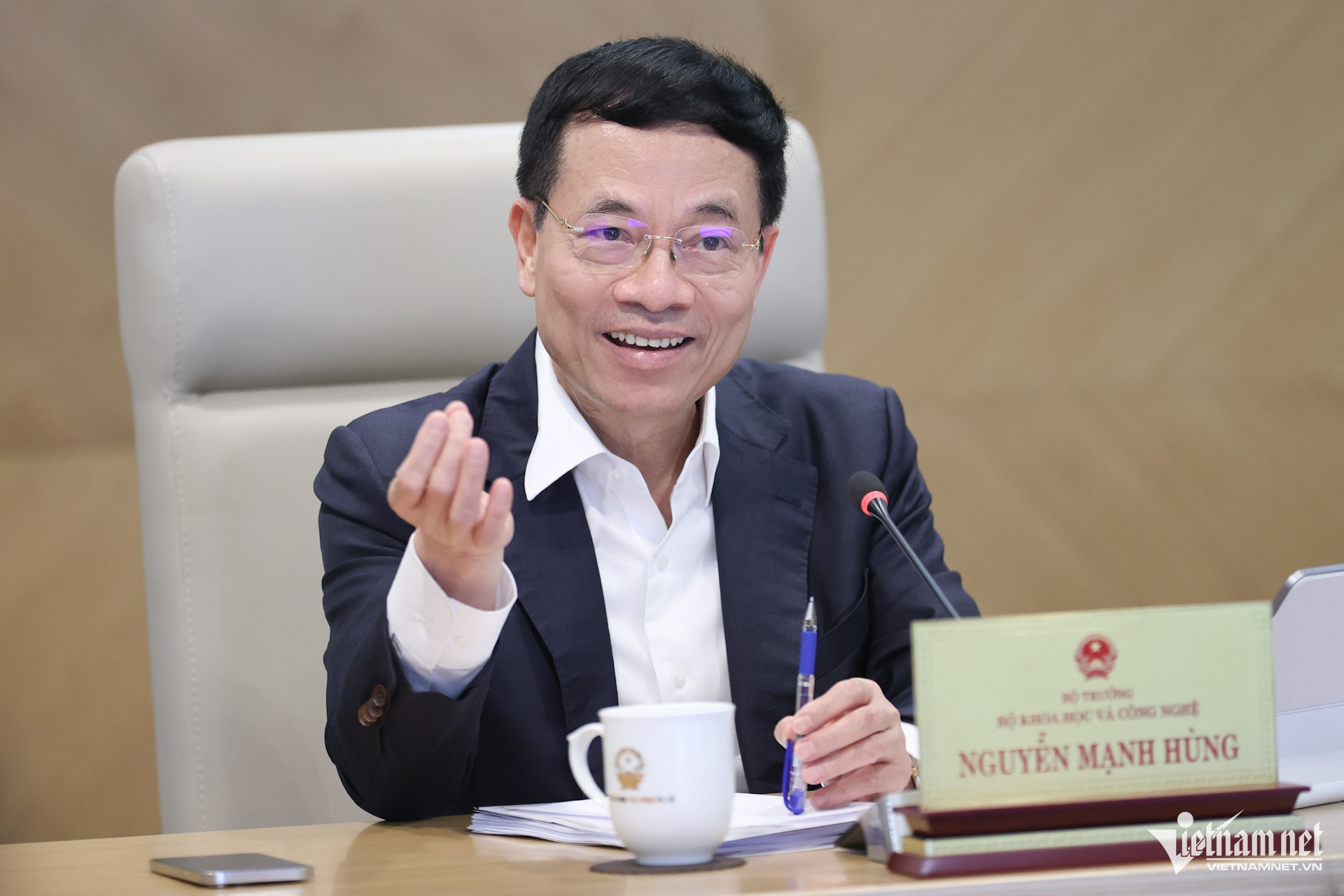
On March 24, Minister of Science and Technology Nguyen Manh Hung held a meeting with the Department of Startups and Tech Enterprises, the Department of Innovation, and the National Technology Innovation Fund (NATIF).
These are three units under the innovation (INN) sector of the Ministry of Science and Technology (MOST), and the first ones chosen by the Minister for direct meetings after the merger of the old Ministry of Information and Communications with the old Ministry of Information and Communications to form the new MOST.
Explaining why he chose these three units to worth with first, Hung said the ministry is working on revising the 2013 Science and Technology Law, now renamed the Law on Science and Technology (S&T) and Innovation. This is the first time innovation is placed on equal footing with S&T. This aims to bring innovation into daily life, enhancing competitiveness, driving economic growth, and improving people’s quality of life.
The Minister clarified differences between concepts like technology application, technology transfer, innovation, startups, and technology incubation, and outlined the tasks of the technology innovation fund.
Hung said technology application simply means "buying and using". Buying technology for use will account for 80 percent of Vietnam’s innovation activities. It is easy but has an immediate economic impact.
Technology transfer is "buying and using" at a higher level, possibly including training for self-maintenance, repair, operation, minor part replacement, or even explaining the technology.
Technology renovation goes further—‘digesting’ bought technology, improving it to boost productivity, cut costs, create new products that even the seller has not thought about, adding value to expanding technological boundaries. Innovation is about enhancing national competitiveness.
The Minister cited an example from a visit to a telecom network operations center in India: "They bought a $500-million software from Ericsson, but hired three programmers to renovate it, adding features for better efficiency." The value those individuals created exceeded the original software’s worth.
For the innovation sector, the demand for technology development arises during the application—after buying and improving tech, people realize that they can do better, leading to self-research and development.
This tech development approach starts "from the ground up," unlike the "top-down" method.
The Minister explained: "Sometimes innovation is just bringing something never seen or used before into use. Creative innovation means buying it but using it differently from others."
As for the National Technology Innovation Fund, the Minister directed a shift from lending money to supporting loan interest rates and credit guarantees. The fund’s activities will focus on aiding technology applications—buying and using—to support businesses.
Measuring innovation’s economic contribution
Hung said a critical task is measuring innovation’s contributions to socio-economic development.
He tasked the three departments and the NATIF to work on the tools and models to assess and measure innovation activities, identifying models and impacts of innovation on economic growth and national competitiveness.
This is the first step that needs to be taken, as without measurement, management is impossible—no one could know the sector’s impact, where to prioritize, or where to invest for growth. No measurement means spending money without results, wasting public funds, and risking mishaps.
Guiding Vietnam’s innovation strategy
At the meeting, the Minister noted that innovation no longer follows the traditional path: from scientific research to technology, from technology to innovation, and from innovation to digital transformation. Now, innovation can stem from real societal needs, prompting technology development and scientific research.
This requires adjusting relationships between businesses, institutes, universities, and the state. Businesses, driven by competition, need innovation and proactively bring their problems to institutes and universities for collaboration. The state will support this relationship.
Hung went on to stress that S&T, innovation, and digital transformation must contribute at least 5 percent to the targeted 10 percent annual GDP growth rate. Innovation is expected to account for 60 percent of that, or about 3 percent of GDP growth, with digital transformation contributing 1-1.5 percent and S&T 1 percent.
This is the first time the S&T sector has set a specific innovation contribution target for the economy.
To achieve this, the Minister proposed establishing innovation centers in each industry and locality, while pushing policies to support businesses via import tax exemptions for machinery, corporate income tax incentives, and preferential loans.
A key solution is setting up a National Venture Capital Fund with a 30 percent state and 70 percent private capital model, maximizing market resources to back startups with unicorn potential.
Van Anh